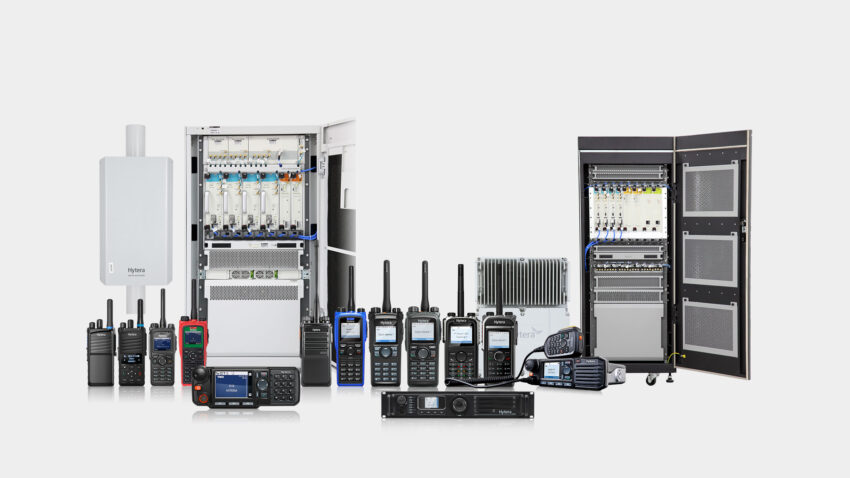What is Terrestrial Trunked Radio?
Terrestrial Trunked Radio (TETRA) is a digital mobile radio system standard that provides secure, efficient and reliable communications for public safety networks and commercial users. Developed in the 1990s by the European Telecommunications Standards Institute (ETSI), TETRA uses terrestrial land-based transmitters and receivers rather than satellites, achieving a coverage comparable to GSM and UHF two-way radio systems.
How does TETRA work?
TETRA uses Time-Division Multiple Access (TDMA) to divide the channel into individual time slots, allowing multiple users to share the same frequency channel simultaneously in a trunked mode. It has four dedicated channels (two carrying voice calls, one for control signaling and one for carrying data services). The system architecture and protocols allow for encryption, enhanced security and interoperability between different vendor systems and locations. The main feature of TETRA is its support for group calls, where one user can simultaneously transmit voice and data to an entire pre-defined group of users.
Uses of TETRA in Public Safety
Terrestrial Trunked Radio has become the de facto standard for digital land mobile radio systems used by public safety organizations worldwide. It provides reliable and secure communication capabilities required for mission-critical operations. Some key uses of TETRA in public safety include:
– Police Forces – It allows real-time coordination between police patrol cars and dispatch centers. Features like push-to-talk group calls enable rapid response in emergency situations.
– Fire Departments – Firefighters can communicate effectively at accident sites and inside smoke-filled buildings using TETRA radios with their robust signal penetration.
– Ambulance Services – Paramedics can get quick instructions from doctors during medical emergencies and coordinate with hospitals on patient transport.
– Transportation Agencies – Transportation agencies use TETRA to manage train operations, track maintenance crews and coordinate with other emergency responders in case of incidents.
– Utilities – Power, gas and water utilities rely on TETRA for safe fieldwork operations, disaster recovery efforts and grid management across large geographical areas.
Uses of TETRA in Commercial Sector
While designed primarily for public safety, TETRA has found widespread adoption in commercial and industrial sectors as well due to its high performance levels. Some examples include:
– Transportation – Shipping ports, airports and public transport providers employ TETRA for ground operations, security and worker mobility across facilities.
– Oil & Gas – Offshore rigs, refineries and pipeline maintenance crews leverage TETRA to ensure operational safety in hazardous work environments.
– Manufacturing – Factories utilize TETRA radio systems for warehouse logistics, quality control inspections and team coordination across large production plants.
-Construction – Construction companies benefit from TETRA’s reliability, flexibility and large coverage areas to safely manage projects at remote sites.
– Venue Management – Stadiums, convention centers and theme parks use TETRA to deliver fast response times for crowd control and emergency situations.
Advantages of TETRA over Legacy Analog Systems
TETRA offers significant advantages over legacy analog radio technologies like Project 25 (P25), allowing it to largely replace them in critical communications networks:
– Increased Spectral Efficiency – TETRA uses TDMA to optimize spectrum usage compared to less efficient analog and direct mode solutions.
– Encryption & Security – Built-in encryption ensures only authorized users can listen to voice and data transmissions. This is vital for public safety communications.
– Interoperability – TETRA provides standardized interfaces allowing disparate radio systems and vendors to interwork seamlessly during multi-agency operations.
– Advanced Features – Beyond basic push-to-talk, TETRA supports telephony, messaging, tracking and advanced work order/assignment features for mobile workers.
– Large Coverage – Public networks facilitate communication in both urban and rural areas through a network of terrestrial cells or single-site systems.
– Cost Savings – Simplified infrastructure and management translate to lower operating costs compared to managing separate radio systems with TETRA’s unified platform.
Support for Future Technologies
While TETRA remains prevalent, it is being enhanced with new capabilities to stay relevant. The TEDS (TEDS-Railway and TEDS-Maritime) profile extensions support rail and maritime communications applications. TETRA is also being integrated with broadband technologies like LTE to benefit from larger capacities and streaming capabilities. Industry initiatives are exploring how 5G and IoT can build upon TETRA’s mission-critical features through hybrid networks. These evolutions will help TETRA continue powering communication needs in both public safety and commercial sectors for many more years.
In conclusion, Terrestrial Trunked Radio has established itself as the dominant digital mobile radio technology worldwide, particularly for safety-critical networks. Its inherent security, reliability and interoperability combined with continuous enhancements ensure it will carry on supporting critical communications well into the future.

